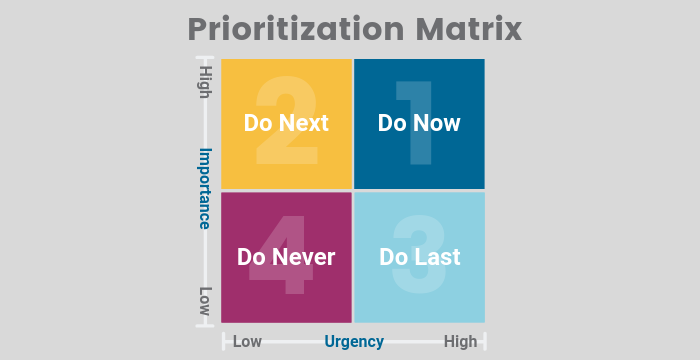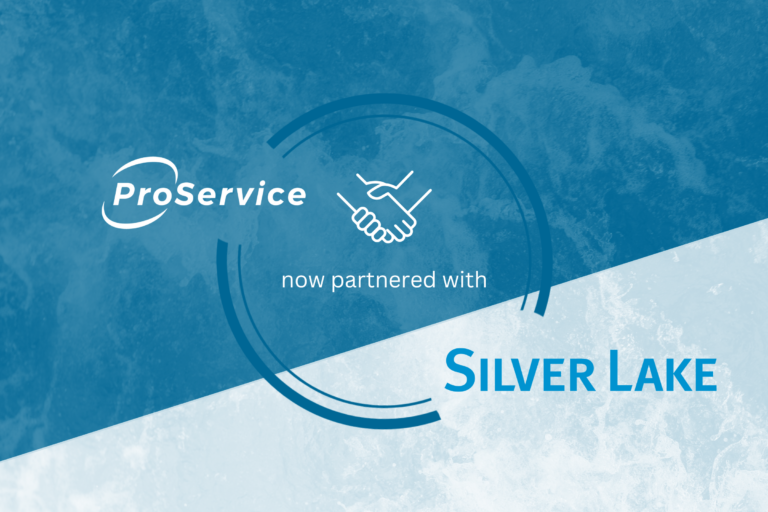Benefits administration: What it means and why it matters
Every business would love to offer its employees an incredible suite of benefits, but finding and managing health insurance options, retirement plans, and other offerings – all while staying within budget – is no easy task. There’s a reason so many organizations develop or seek out the expertise necessary for effective benefits administration, though. Compelling benefits that are tailored to the needs of your workforce can attract top talent to your company like little else, and keep them there over the long haul.
Let’s take a look at what benefits administration involves, the advantages of making it a priority, and a few strategies you can use to build and manage a great benefits package at your company.
Is Outsourced HR Right for Your Business?
Whether you're a small startup, a growing mid-size company, or a large enterprise, this guide is tailored to help you make an informed decision.
What is benefits administration?
Benefits administration is the process of managing the suite of benefits a company offers its workers. This involves everything from determining which benefits to offer, to ensuring employees are aware of all benefits and are able to access them, to updating benefits as necessary to suit changing business needs and employee priorities. Crafting a high quality employee benefits package motivates team members and can turn them into life-long advocates for your organization.
Benefits administration is typically a responsibility of an organization’s human resources (HR) professionals. Larger companies may employ one or more benefits administrators or benefits managers who focus solely on benefits administration. At smaller companies, an HR manager may oversee employee benefits administration as just one of their duties.
Sorting through the many available types of benefits, managing an employee benefits program, and ensuring regulatory compliance can all be difficult, time-consuming tasks. That’s why many companies choose to outsource benefits administration to a professional employer organization (PEO). PEOs have state-specific expertise and make the selection and management process easy for overburdened HR professionals.
Whether an organization handles benefits in-house or opts to outsource, establishing effective benefits administration processes is critical. Even a relatively simple benefits package has more than its share of complexities to navigate, and failing to administer benefits effectively can have substantial negative repercussions for your business, including increased employee dissatisfaction, a higher turnover rate, and potential fines.
The importance of benefits administration
Effective employee benefits administration positively impacts a company’s ability to attract and retain talent. Employees value benefits just as much as a competitive salary, and a reputation for offering great benefits is a key part of any strong employer brand. The majority of employees would consider taking a pay cut in exchange for improved benefits, and 35% say that a better benefits package would make them more likely to stay in their current position. Given that the cost of replacing a worker who quits can be equal to as much as two times the employee's salary, a well-targeted and administered benefits package helps protect your business against high turnover.
Benefits administration also helps keep your company compliant with the many laws and regulations related to employee benefits. Although not all benefit offerings are governed by state and federal rules and regulations, more than a few are. For example, the Internal Revenue Service (IRS) maintains a set of rules that employers must follow when providing 401(k) retirement plans to workers, while the federal Affordable Care Act (ACA) and many states impose health insurance coverage requirements on certain employers. Effective benefits administration helps companies avoid running afoul of these important regulations.

What are the steps in benefits administration?
Here are a few easy-to-follow steps to improve employee benefits administration at your company, whether you’re interested in building out a benefits package for the first time, expanding your offerings, keeping the cost of benefits down, or minimizing your administration workload.
1. Research and select employee benefits packages
Before anything else, you should research available benefits offerings and select those that meet employee needs while staying within your company’s budget. Start by taking into consideration the benefits that comparable companies – whether in terms of industry, size, or geography – offer their workers. This will provide a baseline for what employees will expect from your organization while possibly shedding light on opportunities to incorporate benefits that will set your company apart from the competition.
You can also seek feedback from current employees about what current benefits they value most and which they’d like to see your enterprise start offering. Discussing these issues with team members in group settings and 1:1 meetings is a good start, but many workers aren’t comfortable revealing their real thoughts without the shield of anonymity. Consider using online surveys or a dedicated survey tool to get confidential, accurate input from your whole workforce.
You should look into applicable laws and regulations as well – or seek help from hired professionals – to determine whether you must legally offer specific benefits. In the U.S., these generally include worker's compensation and unemployment insurance. Certain employers are also required to provide health insurance, as discussed above, as well as unpaid time off under the Family and Medical Leave Act (FMLA).
Finally, evaluate the financial details associated with different benefits. Combine the information you’ve gathered up to this point with this financial data to craft the most appealing benefits package you can afford. And don’t forget to keep the big picture in mind: as compelling benefits can boost hiring, retention, and engagement, employers may recoup some of their benefits program costs by reducing attrition and cost-per-hire while improving productivity.
2. Roll out your employee benefits
After putting together your company’s benefits package, it’s time to ensure your employees can take advantage of them. Start with providing information to workers about all the benefits your organization offers, covering costs, how employees can access them, and details on how and when to enroll, if necessary. For instance, when it comes to health insurance, you should provide information on open enrollment each year.
Make it as easy as possible for every team member to get value from all the benefits your company rolls out. This requires communicating with employees in easy-to-understand language that avoids technical jargon, clearly expressing the value and purpose of each benefit, and distributing information across a variety of channels. Everyone absorbs information differently, so leverage group and one-on-one meetings, printed resources, email, chat tools, and HR platforms to get the message out. Put together FAQs anticipating common employee questions as well, so team members can reference key points at any time.
3. Manage your benefits program
Benefits programs aren’t a “set it and forget it” proposition. Businesses should regularly review the benefits they offer to ensure compliance with changing laws, industry standards, and employee preferences. They must also provide a way for new employees to learn about benefits packages after the initial benefits rollout is complete. Remember that all new hires will need training on available benefits and how to access them, and it’s a good idea to offer additional training to all team members whenever your company updates its benefits package. Ensure that your organization has channels in place that make communicating these updates to all workers easy, while enabling employees to ask questions and get timely answers about benefits offerings.
To help tame the complexity of benefits management, businesses should take advantage of HR platforms that streamline enrollment, provide up-to-date information on each team member’s benefits in a single place, and allow employees to easily take advantage of benefits like paid time off (PTO). Or consider engaging with an HR outsourcing services company to ensure that benefits administration and other important HR responsibilities are in the hands of experts.
4. Comply with legal requirements
Without effective benefits administration, your company can’t be sure it’s in full compliance with state and federal laws and regulations, whether that’s providing required health insurance coverage or observing limits on retirement plan contributions. As noted above, the ACA imposes federal health coverage requirements on employers with 50 or more workers. Some states go beyond the ACA’s requirements: in Hawaii, for example, most employers must provide healthcare coverage that complies with the Hawaii Prepaid Health Care Act (HPHCA).
Transform Your HR Experience with ProService Hawaii
We’re all about maximizing the way you get HR admin done. When you surround your business with ProService’s solutions and consultative support, there’s no limit to what your business can do!
What is the Employee Benefits Security Administration (EBSA)?
Failure to adhere to regulations governing benefits can result in fines imposed by the Employee Benefits Security Administration (EBSA). Founded in 1970, the EBSA is a federal agency that oversees and enforces laws related to pensions, health insurance, retirement plans, and other offerings that may be part of a benefits package. Many of EBSA’s enforcement responsibilities relate to the standards for retirement and health plans established by the Employee Retirement Income Security Act of 1974 (ERISA). In addition to enforcing compliance, EBSA provides guidance to help workers know their rights and help employers understand the requirements they must meet.
What does a benefits administrator do?
A benefits administrator is an HR professional whose main job is to oversee and manage employee benefits. Organizations that lack the resources for a dedicated in-house benefits administrator typically assign the role’s responsibilities to an HR generalist or turn to an HR outsourcing vendor. A skilled benefits administrator can help develop a benefits package that delivers maximum value to employees and makes your organization stand out from the competition while staying within budget.
The key duties of a benefits manager align with the four steps covered above:
- Research. Benefits administrators research available benefits and determine which the business can and should offer.
- Rollout. The benefits administrator oversees the implementation of benefits programs, including the creation of documentation and employee training.
- Maintenance. By reviewing benefits and assessing changing business priorities and employee preferences, administrators maintain and update benefits programs as needed.
- Compliance. Benefits administrators stay up to date on applicable laws and regulations to keep their organizations' benefit packages in compliance.
Types of employee benefits
There are a wide range of potential benefits your organization can provide to its employees. Here are five of the most common benefits companies offer.
Health insurance
Health insurance plans for employees – and, potentially, their dependents – are perhaps the most important component of a benefits package. Seventy-nine percent of employees say health insurance is the most valuable benefit they receive.
Unsurprisingly, health insurance is typically the most expensive benefit an employer can offer. The percentage of premiums your company covers is the most significant cost factor involved, and your company should carefully balance several considerations before deciding on the proportion it pays for.
Take a look at the coverage provided by competing organizations of a comparable size in your area and industry, and evaluate how much your company relies on a strong benefits package to attract and retain high quality employees. Regulations can also play a role here: the HPHCA, for instance, requires employee contributions to remain below the lesser of 1.5% of the worker’s monthly wages or 50% of the cost of coverage. And don’t forget to take a close look at what your workforce wants out of its benefits package – for instance, an older workforce may be less willing to tolerate high copays and deductibles than younger employees who need health care less often.
The choice between healthcare maintenance organizations (HMOs) and preferred provider organizations (PPOs) can also make a significant difference in terms of cost and the availability and quality of care. HMOs generally feature lower premiums while requiring employees to stay in network and choose a primary care provider (PCP) that must refer them to any specialists. PPOs offer additional flexibility and allow employees to go out of network more easily, although they typically come with higher premiums. As when determining what percentage of premiums to cover, employers should balance what their employees are looking for in a health plan with the relative expenses to both the organization and the employee.
Beyond medical insurance, your company can also offer drug, vision, and dental coverage, or let workers choose these additional levels of coverage as voluntary benefits they pay all or most costs for. Voluntary benefits typically come at little to no cost to an employer, and may be paid for largely or wholly by employees. They also include offerings like disability insurance, student loan assistance, and retirement plans. Voluntary benefits are a great way to provide additional value to employees while keeping expenses down, as employers will get better rates for these items than individuals can on their own.

Flexible spending accounts
A flexible spending account (FSA) gives employees the option to use pre-tax funds to pay for medical costs that their health insurance plan doesn’t cover. FSAs require employees to contribute pre-tax money ahead of time into a dedicated account, which they can then draw from to pay for healthcare expenses.
FSAs are attractive to workers because they effectively reduce the cost of medical services by allowing workers to pay with pre-tax dollars. It doesn’t cost much for a business to offer FSAs, either, as all FSA contributions come from employees, although employers can choose to match employee FSA contributions up to a certain amount.
Retirement plans
Retirement plans allow employees to set aside money for the golden years, most commonly through a defined contribution plan like a 401(k). This type of plan lets workers contribute pre-tax dollars for retirement, with the option for employers to match a certain amount of employee contributions. Employers can also choose to offer IRA-based plans, or they can provide defined benefit plans that give workers a pension. There is no federal mandate for companies to offer retirement plans, but some states require certain employers to do so, usually in the form of a Roth IRA.
Life and disability insurance
Life and disability insurance are great ways to round out your company’s benefits package. Employees often bear most or all of the cost of these voluntary benefits. Many employers pay the cost for a basic life insurance policy on all employees, with the option for workers to purchase additional coverage at a group rate.
Companies can offer both short- and long-term disability insurance. Short-term disability coverage is for injuries that keep an employee out of work for a period of less than a year – typically for 3-6 months – and generally covers from 40-70% of wages. Long-term disability is for injuries that keep workers off the job for years, and replaces a higher proportion of lost wages – usually between 60-85%.
Time off
Giving team members time off lets them recharge and avoid burnout, improving wellness and turning this benefit into a true win-win for employers and employees. There are many different types of time off organizations can offer, including paid time off (PTO), sick leave, and family, medical, or parental leave.
As always, it pays to keep relevant legal requirements in mind when crafting this part of your benefits package, as there are federal, state, and municipal laws relating to the accrual and use of time off. The FMLA, which applies to public sector employers and businesses with 50 or more employees, requires organizations to offer employees who meet its requirements up to 12 weeks of unpaid leave for family or medical reasons. Your company may of course choose to offer paid leave in addition to this, which can set it apart from the competition in the eyes of applicants and current employees.
Remember that offering ample leave time won’t do much good if employees don’t feel like they can actually take time off, however. Educate your leaders on the need to keep workloads reasonable, and encourage team members to take a break when it’s necessary. A healthy company culture where employees are comfortable stepping away to attend to important matters and refresh themselves is one that will pay dividends both now and in the future.

How to choose benefits administration software
Benefits administration software can simplify the process of selecting and managing benefits at your company. Employees can use them to easily enroll in and view their benefits, while HR professionals and managers can leverage them to review employee records, offer customized benefits packages, and approve benefits-related requests.
When selecting a platform, be sure that it supports all the benefits your company may want to offer. Some software only supports certain types of benefits or preconfigured benefits packages. Platforms that offer a wide range of flexible options make it possible to differentiate your company from the competition with a suite of unique, compelling benefits, while staying within budget.
You should also look for a benefits administration solution that integrates with your company’s other HR systems. Importing employee data from external tools saves time and avoids the risk of error when manually reentering the information. Integration with your company’s payroll software is also important, ensuring that employee contributions related to health plans, retirement accounts, and other benefits offerings can be automatically deducted each pay period.
Simplifying benefits administration with outsourcing
No matter the size of your business, taming the complexity of benefits administration can be challenging. To take this difficult work off their plate, many companies opt to outsource HR processes like benefits administration. These companies work with an HR outsourcing service provider like a PEO to handle selecting, rolling out, and maintaining benefits.
The best HR outsourcing vendors are staffed with experts who know benefits options, trends, and laws inside and out. They work with your company to identify the benefits employees are eligible for and put together a winning benefits package. Outsourcing professionals handle the most difficult admin tasks and answer employee questions, freeing your company’s leaders and HR staff to focus on high priority initiatives. HR outsourcing providers can even save your company costs by leveraging their buying power with health insurance providers and by providing real-time data into your benefits expenses.
If you're considering working with an HR outsourcing organization to provide outsourced benefits administration, be sure the vendor understands the laws unique to your jurisdiction, since healthcare and retirement plan regulations vary widely. Look for a provider that offers expertise on the most important and time-consuming aspects of benefits administration, like health insurance eligibility tracking, open enrollment and benefits elections, ACA and ERISA compliance, COBRA administration, and healthcare billing reconciliations.
Make benefits administration easy with the right partner
As Hawaii's leader in HR consulting and management, ProService Hawaii provides highly flexible, efficient benefits administration services to support your employees. With three decades in business, ProService has a track record employers can trust when looking for outsourced benefits administration solutions in Hawaii. ProService offers affordable group health insurance options, in addition to 401(k) retirement plans, FSAs, life insurance, and more. And with the expertise to handle payroll, taxes, and other HR responsibilities, ProService is trusted by 3,000+ employers in Hawaii, has 5 office locations, handles multi-state support, and is ready and able to make life easy for management, employees, and HR professionals at your company.
ProService knows that choosing an HR partner is a major decision, and its team of experts are standing by to answer your questions and align with your needs. Find out why ProService is trusted by thousands of Hawaii employers and contact us today.
Simplify Your Benefits Administration Through Every Season
Managing benefits doesn't have to be complicated. See how Proservice Hawaii makes it seamless.









